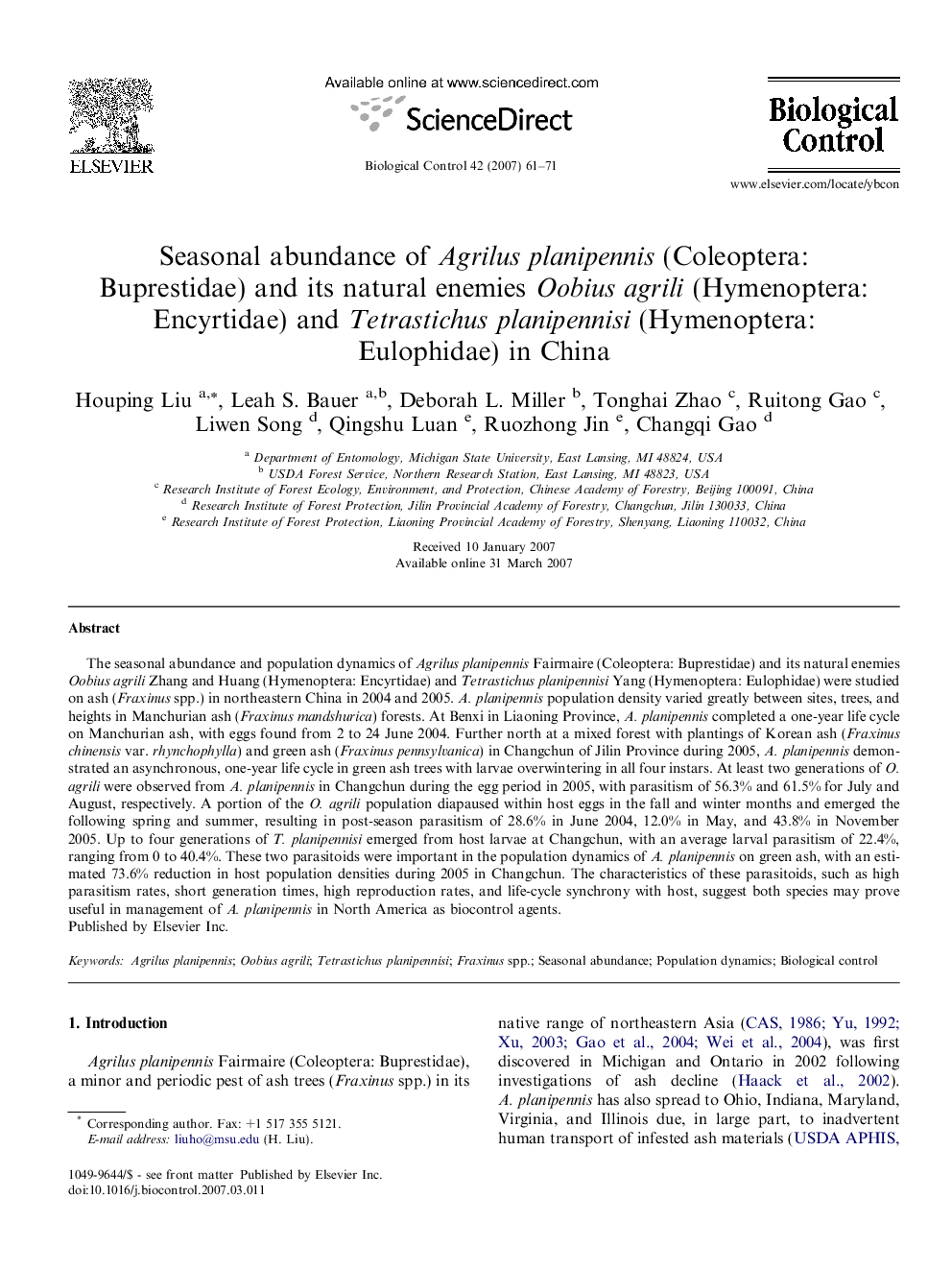| Article ID | Journal | Published Year | Pages | File Type |
|---|---|---|---|---|
| 4505002 | Biological Control | 2007 | 11 Pages |
The seasonal abundance and population dynamics of Agrilus planipennis Fairmaire (Coleoptera: Buprestidae) and its natural enemies Oobius agrili Zhang and Huang (Hymenoptera: Encyrtidae) and Tetrastichus planipennisi Yang (Hymenoptera: Eulophidae) were studied on ash (Fraxinus spp.) in northeastern China in 2004 and 2005. A. planipennis population density varied greatly between sites, trees, and heights in Manchurian ash (Fraxinus mandshurica) forests. At Benxi in Liaoning Province, A. planipennis completed a one-year life cycle on Manchurian ash, with eggs found from 2 to 24 June 2004. Further north at a mixed forest with plantings of Korean ash (Fraxinus chinensis var. rhynchophylla) and green ash (Fraxinus pennsylvanica) in Changchun of Jilin Province during 2005, A. planipennis demonstrated an asynchronous, one-year life cycle in green ash trees with larvae overwintering in all four instars. At least two generations of O. agrili were observed from A. planipennis in Changchun during the egg period in 2005, with parasitism of 56.3% and 61.5% for July and August, respectively. A portion of the O. agrili population diapaused within host eggs in the fall and winter months and emerged the following spring and summer, resulting in post-season parasitism of 28.6% in June 2004, 12.0% in May, and 43.8% in November 2005. Up to four generations of T. planipennisi emerged from host larvae at Changchun, with an average larval parasitism of 22.4%, ranging from 0 to 40.4%. These two parasitoids were important in the population dynamics of A. planipennis on green ash, with an estimated 73.6% reduction in host population densities during 2005 in Changchun. The characteristics of these parasitoids, such as high parasitism rates, short generation times, high reproduction rates, and life-cycle synchrony with host, suggest both species may prove useful in management of A. planipennis in North America as biocontrol agents.
